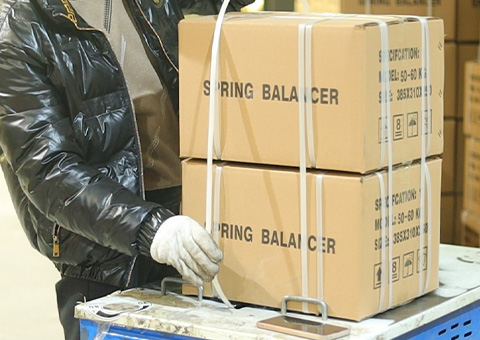overhead gantry
Overhead Gantry Enhancing Efficiency in Material Handling
In the world of industrial operations, efficiency and safety are paramount. One of the vital solutions that have emerged to address these priorities is the overhead gantry. An overhead gantry, often referred to as a gantry crane, is a type of crane that consists of a hoist supported on a gantry, which is a framework that is elevated above the ground. Typically used in warehouses, construction sites, shipyards, and manufacturing plants, these cranes play a crucial role in lifting and moving heavy materials, thus streamlining operations and enhancing productivity.
One of the key advantages of using an overhead gantry is its space-saving design. Unlike traditional cranes that require extensive floor space due to their operational range, an overhead gantry operates overhead, freeing up valuable ground space for other activities. This is particularly beneficial in environments where floor space is limited. The elevated design allows for the transportation of materials in a more efficient manner, reducing the likelihood of accidents that can occur when heavy loads are maneuvered at ground level.
In addition to saving space, overhead gantries are highly versatile. They can be customized to accommodate various load capacities and can be fitted with different types of hoists to suit specific needs. This adaptability makes them suitable for a wide range of applications, from lifting large components in automotive assembly lines to moving bulky materials in shipping yards. Furthermore, gantry cranes can be wheeled or fixed, allowing for both portability and stability, which cater to diverse operational requirements.
overhead gantry

Safety is another major consideration in any industrial setting, and overhead gantries excel in this area. By lifting loads high above the ground, they minimize the risk of accidents related to load handling. Operators can control the movement of loads from a safe distance, and advanced features such as limit switches, emergency stops, and remote controls enhance safety further. Proper training for operators, coupled with stringent adherence to safety regulations, ensures that overhead gantries are operated efficiently and safely.
Moreover, the implementation of overhead gantries can lead to significant cost savings for businesses. By automating the lifting and transport of heavy materials, these cranes reduce the reliance on manual labor, decreasing labor costs and minimizing the risk of injury-related expenditures. Additionally, increased operational efficiency leads to quicker turnaround times and improved productivity, allowing businesses to meet customer demands more effectively.
However, while the benefits of overhead gantries are substantial, it is essential for organizations to conduct regular maintenance to ensure optimal performance. Routine inspections, adherence to load capacities, and prompt addressing of any mechanical issues can prolong the life of the equipment and enhance safety.
In conclusion, overhead gantries represent a significant advancement in the field of material handling. Their space-saving design, versatility, safety features, and cost-effectiveness make them an indispensable asset in various industries. As technology continues to evolve, overhead gantries are likely to incorporate even more advanced features, further improving efficiency and safety in material handling operations. Investing in this innovative equipment is not just about enhancing productivity; it's about creating a safer and more efficient working environment for all.
-
Unlock Seamless Relocation with Our Heavy Equipment Moving ExpertiseNewsJun.06,2025
-
Unleash Unrivaled Flexibility with Our Adjustable Gantry CraneNewsJun.06,2025
-
Unleash Heavy-Duty Efficiency with Our Industrial Gantry Crane SolutionsNewsJun.06,2025
-
Revolutionize Steel Handling with Our Magnetic Lifter RangeNewsJun.06,2025
-
Master Equipment Mobility with Premium Machinery Mover SolutionsNewsJun.06,2025
-
Elevate Your Material Handling with Magnetic Lifter TechnologyNewsJun.06,2025
-
YS Permanent Lifting Magnets: The Smarter Way to Handle SteelNewsMay.22,2025
